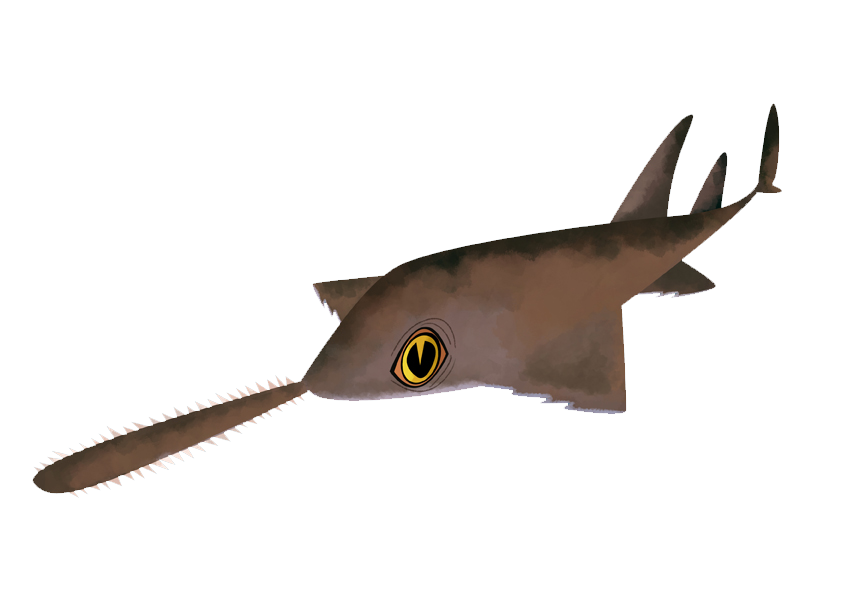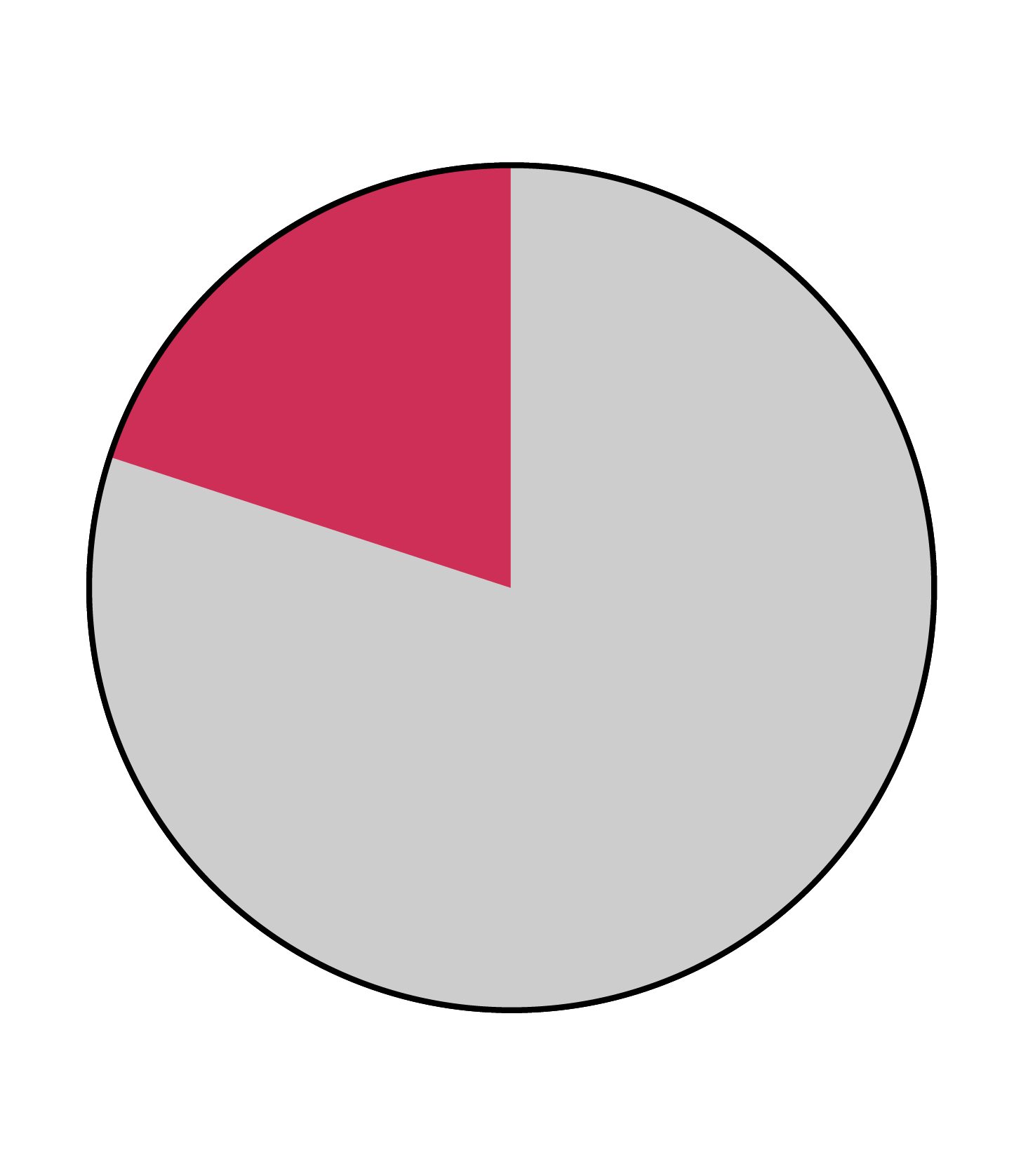Smalltooth sawfish
Pristis pectinata



Smalltooth sawfish are large, shark-like rays that are clearly distinguished by their long rostrum, which is lined with specially adapted teeth. This ‘saw’ is used to rapidly impale prey, such as small fish. They can mostly be found in mangrove, seagrass and sandflat habitats of the Atlantic.

Identification
Just like largetooth sawfish, smalltooth sawfish are actually rays (rather than sharks) as indicated by their flattened heads and gills below the pectoral fins (sharks have their gills above their pectoral fins). Their most identifiable feature is the long saw that extends from their snout, or rostrum, which is lined on either side with large teeth. This saw can make up almost a third of their total body length. Unlike other shark and ray teeth, the rostral teeth do not grow back if damaged. Compared to largetooth sawfish, smalltooth sawfish have more (and smaller) rostral teeth (up to 32 each side, instead of 24), and the front of their dorsal fin is inline with the back of their pectoral fins.
Special behaviour
The highly specialised saw of smalltooth sawfish is particularly well adapted for catching prey – it is so hydrodynamic that it barely disturbs the surrounding water when thrashed from side to side, minimising the chances of prey detecting an incoming strike.
Reproduction
Smalltooth sawfish are ovoviviparous, meaning they grow their embryos internally and nourish them from a yolk sack before giving birth to live, independent young. Several pups (15–20) are born at a time, and although they are thought to pup every other year the gestation period remains unconfirmed. Females take more than 10 years to mature. At birth their rostral teeth do not fully erupt – they are covered by a sheath of tissue to protect the mother.
Habitat and geographical range
Smalltooth sawfish are found in the coastal waters of the tropical Atlantic, primarily in the south-eastern USA and Caribbean, but also on the coast of West Africa. At present, they are most commonly encountered in shallow habitats like estuaries and mangroves in the Caribbean and Gulf of Mexico. Despite their historic abundance on the west African coast from Angola to Mauritania, their current range is severely reduced, with only a few sightings reported in the last decade.

Diet description
Smalltooth sawfish primarily feed on small fish, such as mullet, after stunning them with their rostrum. They also prey on benthic crustaceans and other invertebrates that they stir up from the substrate with their saws. They have even been reported to feed on small sharks.
Threats
The major threat to smalltooth sawfish is overfishing. Their saws make them very vulnerable to entanglement, and although they used to be heavily targeted, they are still taken frequently as bycatch. Declines are so severe on the west African coast that this species may now be locally extinct through much of its original range. Smalltooth sawfish are also highly vulnerable to habitat loss – given their primary use of estuarine and mangrove habitats, coastal development has ongoing severe impacts on habitat availability and quality. Overall, it has been estimated that smalltooth sawfish populations have declined by more than 95%. As such they are considered Critically Endangered by the IUCN and are one of the few elasmobranchs listed on Appendix I of CITES, which represents a ban on their international trade.
Relationship to humans
Smalltooth sawfish have mostly been used as a resource for their fins and meat, but also their large saws, or rostra. The saws in particular are traded as curios or trophies and have been used as ceremonial weapons and for traditional medicine. Like most sharks, they are also used for their leather and oil. They are typically docile, but when caught in a net and trying to escape they need to be handled with extreme care to avoid injury from the thrashing rostrum.
Fun facts
Smalltooth sawfish can grow to more than five metres, with their rostrum almost a third of their total length.
They have been recorded eating small sharks!
They have the ultimate stealth strike thanks to their hydrodynamic saw, which can strike quickly and silently, thrashing rapidly to disable prey
They are born with a sheath over their saw to protect their mother.
References
Peter Last, et al, 2016, Rays of the World.
Oceana, Smalltooth sawfish
National Geographic, Sawfish
IUCN Red List, Smalltooth sawfish: Pristis pectinata


